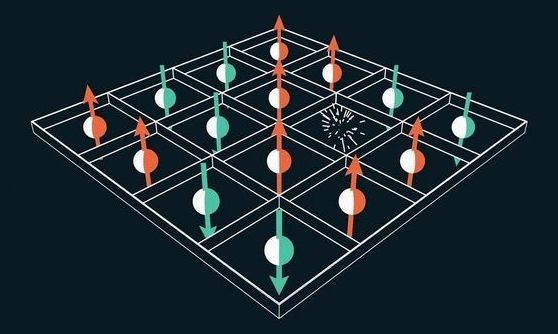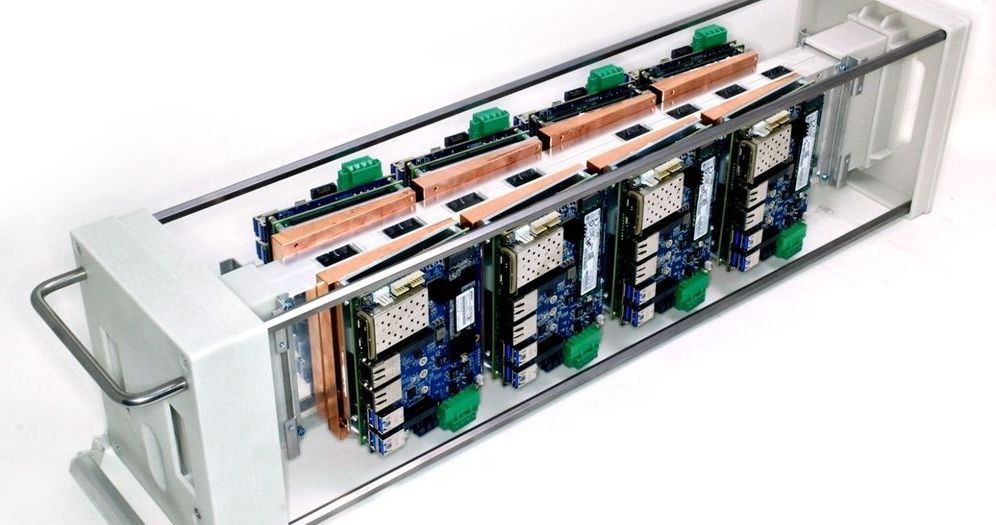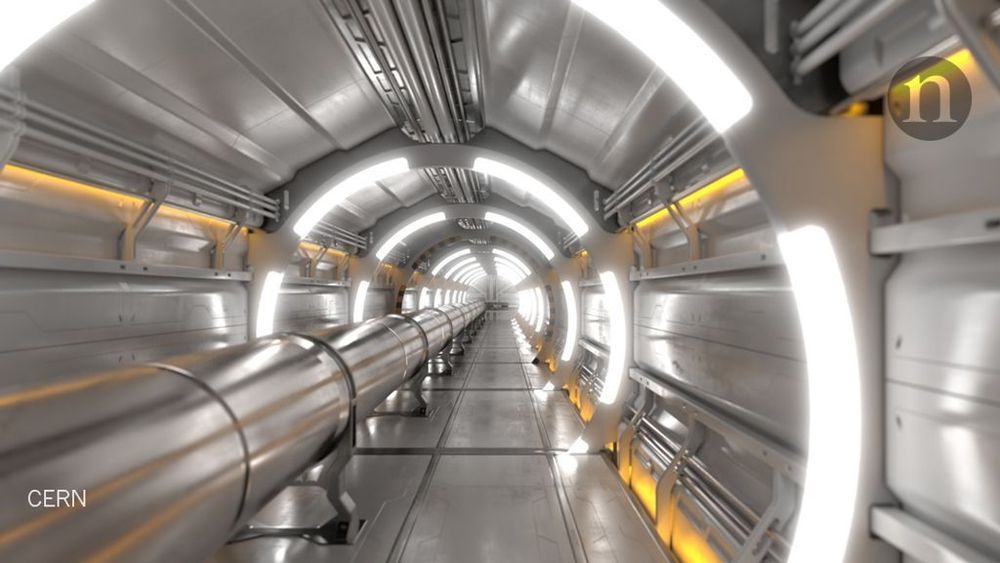Archive for the ‘physics’ category: Page 237
Jan 26, 2019
New Paper: A ‘Mirror Image’ of Our Universe Existed Before The Big Bang
Posted by Paul Battista in categories: cosmology, physics
The Big Bang didn’t just result in our familiar universe, according to a mind-bending new theory — it also generated a second “anti-universe” that extended backwards in time, like a mirror image of our own.
A new story in Physics World explores the new theory, which was proposed by a trio of Canadian physicists who say that it could explain the existence of dark matter.
The new theory, which is laid out in a recent paper in the journal Physical Review of Letters, aims to preserve a rule of physics called CPT symmetry. In the anti-universe before the Big Bang, it suggests, time ran backwards and the cosmos were made of antimatter instead of matter.
Continue reading “New Paper: A ‘Mirror Image’ of Our Universe Existed Before The Big Bang” »
Jan 24, 2019
Physicists Have Discovered a Formula for Success and It Contains a Brutal Truth Most People Don’t Want to Admit
Posted by Genevieve Klien in category: physics
From Reese Witherspoon to Jeff Bezos, those who are super successful in their chosen domain accept this truth.
Jan 23, 2019
A Cooler Cloud: A Clever Conduit Cuts Data Centers’ Cooling Needs
Posted by Caycee Dee Neely in categories: computing, physics
The energy use of data centers is a major drag on resources, but they also use a lot of water. Any technology that increases their efficiency while reducing resource waste is a good thing.
“Now, Forced Physics, a company based in Scottsdale, Ariz., has developed a low-power system that it says could slash a data center’s energy requirements for cooling by 90 percent. The company’s JouleForce conductor is a passive system that uses ambient, filtered, nonrefrigerated air to whisk heat away from computer chips.”
The company that created it, Forced Physics, plans to install the technology in a pilot plant in February.
Continue reading “A Cooler Cloud: A Clever Conduit Cuts Data Centers’ Cooling Needs” »
Jan 21, 2019
Researchers capture an image of negative capacitance in action
Posted by Genevieve Klien in categories: energy, physics
For the first time ever, an international team of researchers imaged the microscopic state of negative capacitance. This novel result provides researchers with fundamental, atomistic insight into the physics of negative capacitance, which could have far-reaching consequences for energy-efficient electronics.
Jan 20, 2019
Physicists Discover Artwork Hidden Under Picasso’s Paintings
Posted by Genevieve Klien in categories: media & arts, physics
Jan 19, 2019
Why it is dangerous to build ever larger big bang machines
Posted by LHC Kritik in categories: alien life, astronomy, cosmology, energy, engineering, ethics, existential risks, general relativity, governance, gravity, innovation, law, nuclear energy, nuclear weapons, particle physics, philosophy, physics, policy, quantum physics, science, scientific freedom, security, singularity, space travel, supercomputing, theory, time travel
CERN has revealed plans for a gigantic successor of the giant atom smasher LHC, the biggest machine ever built. Particle physicists will never stop to ask for ever larger big bang machines. But where are the limits for the ordinary society concerning costs and existential risks?

CERN boffins are already conducting a mega experiment at the LHC, a 27km circular particle collider, at the cost of several billion Euros to study conditions of matter as it existed fractions of a second after the big bang and to find the smallest particle possible – but the question is how could they ever know? Now, they pretend to be a little bit upset because they could not find any particles beyond the standard model, which means something they would not expect. To achieve that, particle physicists would like to build an even larger “Future Circular Collider” (FCC) near Geneva, where CERN enjoys extraterritorial status, with a ring of 100km – for about 24 billion Euros.
Experts point out that this research could be as limitless as the universe itself. The UK’s former Chief Scientific Advisor, Prof Sir David King told BBC: “We have to draw a line somewhere otherwise we end up with a collider that is so large that it goes around the equator. And if it doesn’t end there perhaps there will be a request for one that goes to the Moon and back.”
“There is always going to be more deep physics to be conducted with larger and larger colliders. My question is to what extent will the knowledge that we already have be extended to benefit humanity?”
Continue reading “Why it is dangerous to build ever larger big bang machines” »
Jan 17, 2019
A Fifth Dimension Could Make Star Trek Discovery’s Spore Drive Physically Possible
Posted by Andreas Matt in categories: physics, space
Wow!
The ability to instantaneously jump from one location in space to another clearly violates the laws of physics. Or does it?
Jan 15, 2019
Researchers discover new evidence of superconductivity at near room temperature
Posted by Genevieve Klien in categories: computing, physics
Researchers at the George Washington University have taken a major step toward reaching one of the most sought-after goals in physics: room temperature superconductivity.
Superconductivity is the lack of electrical resistance and is observed in many materials when they are cooled below a critical temperature. Until now, superconducting materials were thought to have to cool to very low temperatures (minus 180 degrees Celsius or minus 292 degrees Fahrenheit), which limited their application. Since electrical resistance makes a system inefficient, eliminating some of this resistance by utilizing room temperature superconductors would allow for more efficient generation and use of electricity, enhanced energy transmission around the world and more powerful computing systems.
“Superconductivity is perhaps one of the last great frontiers of scientific discovery that can transcend to everyday technological applications,” Maddury Somayazulu, an associate research professor at the GW School of Engineering and Applied Science, said. “Room temperature superconductivity has been the proverbial ‘holy grail’ waiting to be found, and achieving it—albeit at 2 million atmospheres—is a paradigm-changing moment in the history of science.”
Continue reading “Researchers discover new evidence of superconductivity at near room temperature” »
















